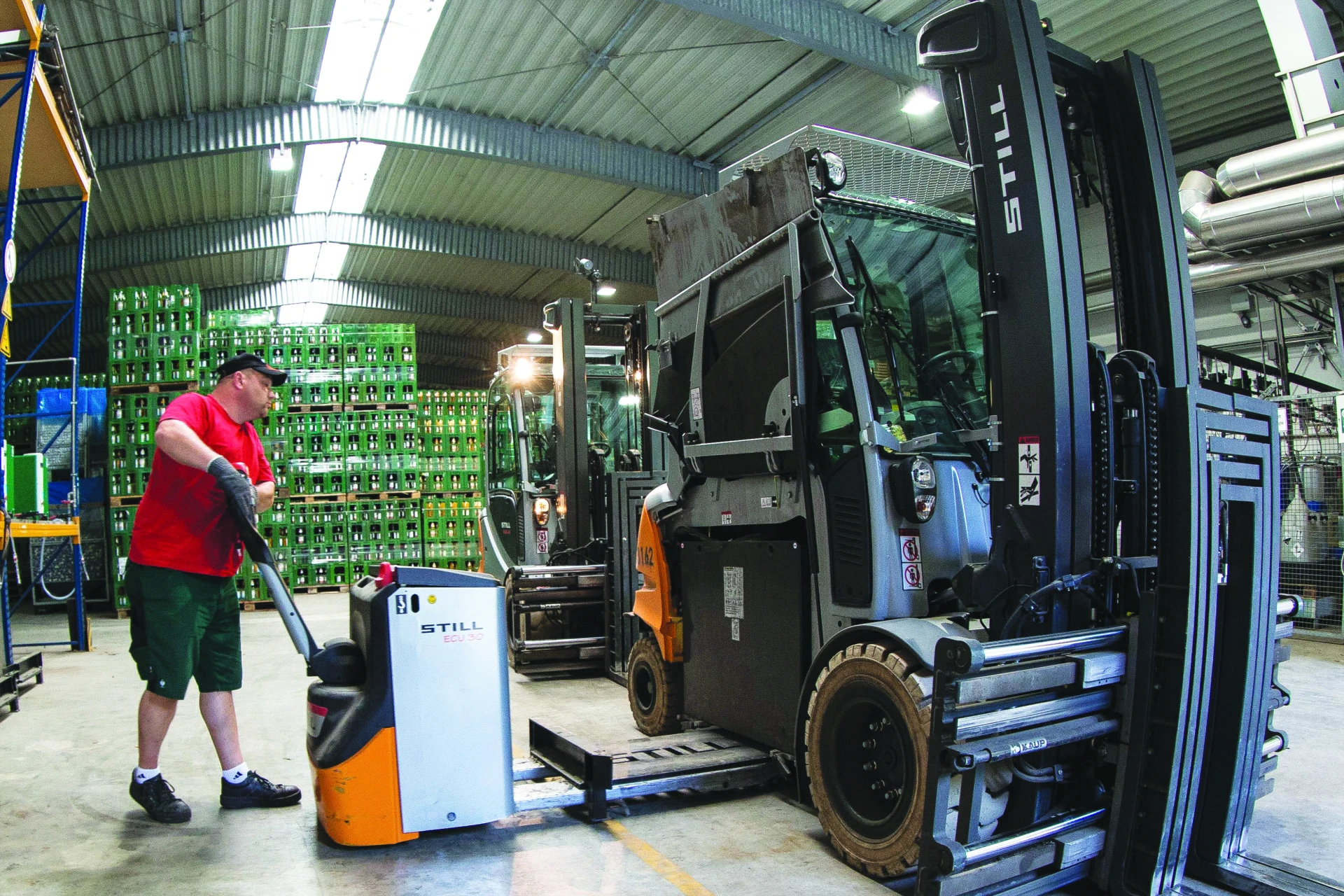Kelterei Rapp´s
Forklift trucks to be fuel-less in future
Challenges: Lowering of operational costs and improvement in contribution to environmental protection.
Solution: Gradual conversion of the entire forklift fleet from diesel engines to electric drive.
STILL products: RX 60 electric forklift truck.

Rapp’s, the juice and cider producer based in Karben, is dependent on the sun in more ways than one. After all, without light and warmth their natural raw materials, which for the large part grow on the region's fruit trees, will not ripen. But now the company, based in Brunnenstraße, is also counting on the sun for its forklift truck fleet.
All seven of these forklift trucks are gradually being switched over from diesel engines to electric drive, it was announced yesterday by Managing Director Klaus-Dieter Kneip. “Five of these are already in use”, says the 61-year-old boss of the Hassia subsidiary. “We felt that, together with our new photovoltaic systems, these were an excellent way for us to do our bit for environmental protection."
Despite the opposing market trend, the firm managed to grow through acquisitions. In January, another brand was acquired, leaving parts of the warehouses filled up from floor to ceiling with juice bottles. Above these bottles, approximately 3000 square metres of photovoltaic panels are stretched out over the warehouse roofs, and it is from these panels that the forklift trucks draw their energy supply. These were already in place two years ago.
Since 2009, the parent company Hassia has been testing the system, with the results showing that energy use has actually decreased following the conversion to electric forklift trucks. According to its own figures, loading and unloading a lorry costs Rapp's EUR 3.66 with a diesel forklift, and only EUR 2.16 with the electric forklifts. Last year Rapp’s still used 26,400 litres of fuel. Now, according to Kneip, the Managing Director, the operation in Karben anticipates spending EUR 12,000 less.
With 75 employees, and a customer radius of a maximum of 200 kilometres, the company is deeply rooted in the region. ‘Natural raw materials’ such as the sun are not just needed for the apples, but are now also used in the everyday running of the fleet.
Although appearing to be quite economically profitable on a small scale, electric vehicles are seldom seen on the streets of Karben. And this is despite the fact that two electric recharging stations are available for drivers of electric cars. These, however, are scarcely used, as in the Wetterau region there are simply too few vehicles that are powered by electricity.
Two years ago, the Friedberg energy provider OVAG and the Frankfurt-based energy supplier Mainova each installed a recharging tank in Karben. One can be found in front of the indoor pool in Klein-Karben, and the other in front of the town hall. According to the municipal authorities, in response to a parliamentary enquiry made by Barbara Büttner, CDU town councillor, they are also occasionally used by e-bikes. Most of the energy, however, is used to power the electric car that Mainova itself presented to the town. In 2012, only 54 complete charges were recorded at the charging point in front of the town hall. This reflects the amount of energy Karben’s electric car needs, when being driven daily by employees of the town hall. There is, however, one disadvantage. The electric runaround has to be reconnected to a charger after 150 kilometres.
Source: Frankfurter Rundschau, 04.09.2013
